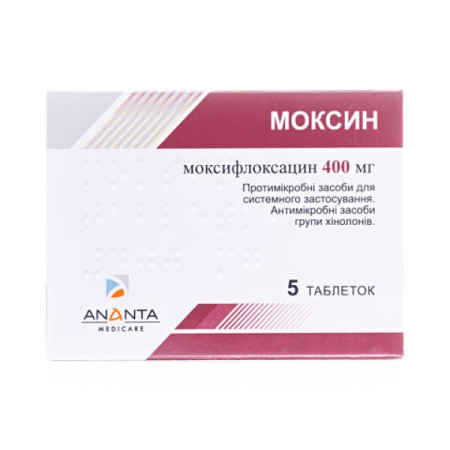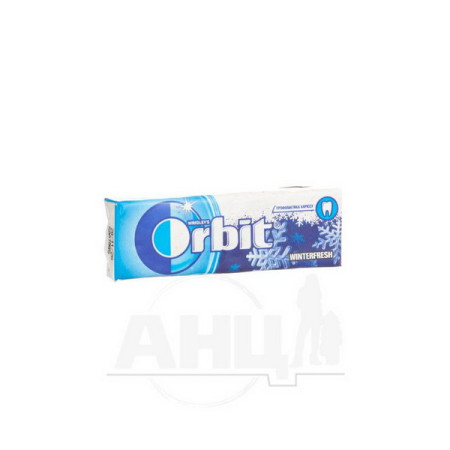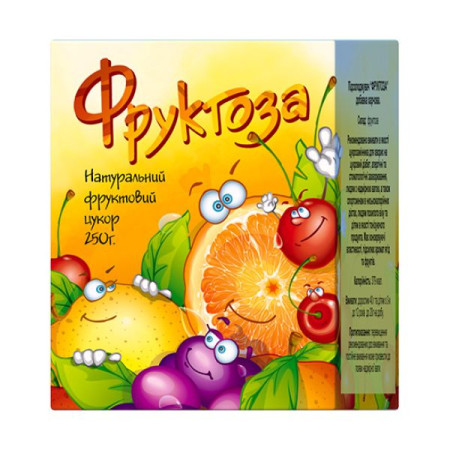Heferol capsules 350 mg blister No. 30

Instructions Heferol capsules 350 mg blister No. 30
Composition
active ingredient: ferrous fumarate;
1 capsule contains 350 mg of ferrous fumarate, which is equivalent to 115 mg of elemental iron;
excipients: magnesium stearate; lactose, monohydrate; sodium lauryl sulfate; colloidal anhydrous silicon dioxide;
capsule composition: titanium dioxide (E 171), quinoline yellow (E 104), azorubine (E 122), patent blue V (E 131), diamond black BN (E 151), gelatin.
Dosage form
Capsules.
Main physicochemical properties:
Hard gelatin capsules No. 1: body – matte yellow-beige; cap – matte dark green; capsule contents – finely granulated red-brown powder with white inclusions.
Pharmacotherapeutic group
Antianemic agents. Iron preparations. Ferrous preparations for oral use. Ferrous fumarate. ATX code B03A A02.
Pharmacological properties
Pharmacodynamics
Heferol contains elemental iron in the form of ferrous fumarate. Approximately two-thirds of the iron in the body is contained in the hemoglobin of the circulating mass of erythrocytes. With insufficient intake of iron with food or impaired absorption, latent or clinically pronounced iron deficiency in the body develops (iron deficiency anemia). Adequate iron intake is of particular importance during pregnancy to ensure normal fetal development and prevent low birth weight in newborns.
The dosage form of Heferol (capsules) prevents iron from coming into contact with the gastric mucosa. Taking the capsules protects the teeth, and the rapid passage of iron through the stomach prevents the development of side effects caused by the irritating effect of iron on the gastric mucosa. In the intestine, iron is gradually released from the capsule and absorbed.
Pharmacokinetics
Ferrous fumarate provides a gradual and uniform release of iron from the digestive tract. Iron absorption occurs almost entirely by active transport in the duodenum and jejunum. In healthy people, approximately 5–10% of the oral dose is absorbed, and in iron deficiency, absorption increases to 80–95%. Muscle tissue (proteins containing cysteine) and ascorbic acid taken orally stimulate the absorption of non-heme iron. Foods containing phytic acid (soybeans, legumes and cereals) and polyphenols (tea, coffee, chocolate, red wine) complicate the absorption of non-heme iron. Hydrolyzed tannins in tea are the main inhibitors; calcium in organic substances or food, some proteins (soybeans, eggs, casein).
The maximum concentration of ferrous fumarate is reached 4 hours after administration. Iron in the form of ferritin and hemosiderin creates a depot of iron in the body. The biological half-life of iron is 12.9 hours. The half-life for oral and parenteral administration of iron is 6 hours. Only minimal amounts of iron are excreted from the body with bile and sweat, and 12–30 mg of iron is excreted during a normal menstrual cycle. During normal lactation, approximately 0.25 mg/day (0.15–0.3 mg) of iron enters breast milk.
Indication
Treatment and prevention of iron deficiency anemia.
Contraindication
Hypersensitivity to the active substance or any of the excipients of the drug.
Paroxysmal nocturnal hemoglobinuria.
Hemochromatosis, hemosiderosis and other types of anemia not associated with iron deficiency in the body (hemolytic anemia, aplastic anemia, thalassemia).
Hemoglobinopathy.
Peptic ulcer in active form.
Regional enteritis (Crohn's disease) and ulcerative colitis.
Repeated blood transfusions.
Parenteral administration of iron preparations.
Children under 12 years old.
Interaction with other medicinal products and other types of interactions
In case of simultaneous administration of Heferol and tetracycline (or ciprofloxacin), it is recommended to take these antibiotics 3 hours before taking the iron preparation or 2 hours after taking it.
It is not recommended to use simultaneously with antacids, calcium carbonate, phosphates, oxalates, trientine, coffee, tea, eggs, milk and dairy products, which reduce iron absorption. Therefore, Heferol should be taken 1 hour before or 2 hours after taking these products.
Ascorbic acid and proteins containing cysteine increase iron absorption. Cholestyramine, food, and antacids reduce iron absorption from the digestive tract.
Iron delays the absorption from the digestive tract of tetracycline, some quinolones (ciprofloxacin), and methyldopa.
Iron preparations reduce the absorption of penicillamine when used simultaneously.
Hematological response to iron therapy develops later in patients receiving concomitant chloramphenicol therapy.
Iron salts delay the absorption of tetracycline and cholestyramine, so this combination should not be used. If it is necessary to take these drugs together, it is recommended to take them with an interval of at least 2 hours.
Iron salts may reduce the effectiveness of levothyroxine.
Application features
The drug should not be taken for more than 6 months, except in patients with prolonged bleeding, menorrhagia, or repeated pregnancy.
Particular caution should be exercised in patients with peptic ulcer and hepatitis.
To prevent constipation, the drug should be taken with plenty of fluids. If taking the drug causes stomach pain, it should be taken with food.
Poor iron absorption has been found in some patients after gastrectomy.
Because anemia can be of the microcytic type, caused by combined iron and vitamin B12 deficiency or folic acid deficiency, patients with microcytic anemia who are resistant to iron therapy should be examined for folic acid or vitamin B12 deficiency.
Iron supplements can turn your stool black. This can interfere with tests used to detect hidden blood in your stool.
Before prescribing iron therapy to patients over 50 years of age, it is necessary to determine the cause of anemia, because anemia at this age can be caused by bleeding in the digestive tract.
Heferol contains lactose monohydrate, therefore patients with rare hereditary galactose intolerance, lactase deficiency and glucose-galactose malabsorption should not take this drug.
The medicine contains azorubine (E 122) and diamond black BN (E 151) which may cause allergic reactions.
Use during pregnancy or breastfeeding
Heferol is indicated for iron deficiencies during pregnancy or breastfeeding.
The use of medications in the first trimester of pregnancy is recommended only after a careful assessment of the benefit/risk ratio and only when absolutely necessary. In the last period of pregnancy, iron preparations can be used only on the recommendation of a doctor.
Pregnant women should also take folic acid.
Ability to influence reaction speed when driving vehicles or other mechanisms
Does not affect.
Method of administration and doses
Take the capsules on an empty stomach 30 minutes before breakfast, with plenty of liquid.
Adults and children over 12 years of age: for prevention – 1 capsule per day; for treatment – 1 capsule 2 times a day.
For treatment and prevention, pregnant women in the 2nd and 3rd trimesters are prescribed the usual doses as for adults.
Elderly patients.
For treatment and prevention, the doses are the same as for adults.
The course of treatment is from 6 to 12 weeks. The drug should be continued for some time after the peripheral blood picture normalizes in order to replenish the iron depot in the body.
In some patients, doses exceeding 30 mg/kg body weight may cause symptoms of overdose. In children, doses exceeding 75 mg/kg body weight may be toxic.
Children
The capsules cannot be divided, so there are no recommendations for the use of Heferol in children under 12 years of age.
Overdose
Ingestion of 20 mg/kg of elemental iron is potentially toxic, and 200–250 mg/kg is potentially fatal. No method of assessment is entirely satisfactory; both clinical features and laboratory tests must be considered. Serum iron levels, measured approximately 4 hours after ingestion, are the best laboratory indicator of the severity of the patient's condition.
| Serum iron | Seriousness |
| < 3 mg/L (55 μmol/L) | Mild toxicity |
| 3–5 mg/L (55–90 μmol/L) | Moderate toxicity |
| > 5 mg/L (90 μmol/L) | Severe toxicity |
Symptoms
Early signs and symptoms include nausea, vomiting, abdominal pain, and diarrhea. Vomiting and stools may be gray or black. In more severe cases, signs of hypoperfusion (cold extremities and hypotension), metabolic acidosis, and systemic toxicity may occur. In severe cases, recurrent vomiting and gastrointestinal bleeding may occur 12 hours after ingestion. Shock may result from hypovolemia or direct cardiotoxicity.
At this stage, signs of hepatocellular necrosis appear, manifested by jaundice, bleeding, hypoglycemia, encephalopathy, and positive anion gap metabolic acidosis. Poor tissue perfusion can lead to renal failure. Rarely, gastric scarring that causes stricture or pyloric stenosis can lead to partial or complete intestinal obstruction 2–5 weeks after ingestion.
Supportive and symptomatic measures include maintaining a patent airway, monitoring heart rate, blood pressure and urine output, establishing intravenous access and administering sufficient fluids to ensure adequate hydration. Bowel lavage should be considered. If metabolic acidosis persists despite correction of hypoxia and adequate fluid replacement, sodium bicarbonate can be given at an initial dose of 50 mmol for adults and repeated as necessary, taking into account the results of arterial blood gas monitoring (target pH 7.4). Desferrioxamine should be considered if the patient is symptomatic (other than nausea) and the serum iron concentration is 3–5 mg/L (55–90 μmol/L) and continues to rise. Hemodialysis is not effective but may be useful in acute renal failure as it accelerates the removal of the iron–desferrioxamine complex.
Side effects
The most common side effects of iron therapy include gastrointestinal disturbances: epigastric pain, nausea, vomiting, anorexia, black stools, diarrhea, metallic taste in the mouth; allergic reactions, including rashes and itching. Prolonged, unjustified use can lead to constipation and hemosiderosis.
Expiration date
5 years.
Storage conditions
Store at a temperature not exceeding 25 °C.
Keep out of reach of children.
Packaging
10 capsules in a blister; 3 blisters (30 capsules) in a cardboard pack.
Vacation category
According to the recipe.
Producer
ALKALOID AD Skopje.
Address
Alexander the Great Boulevard, 12, Skopje, 1000, Republic of North Macedonia.
There are no reviews for this product.
There are no reviews for this product, be the first to leave your review.
No questions about this product, be the first and ask your question.









